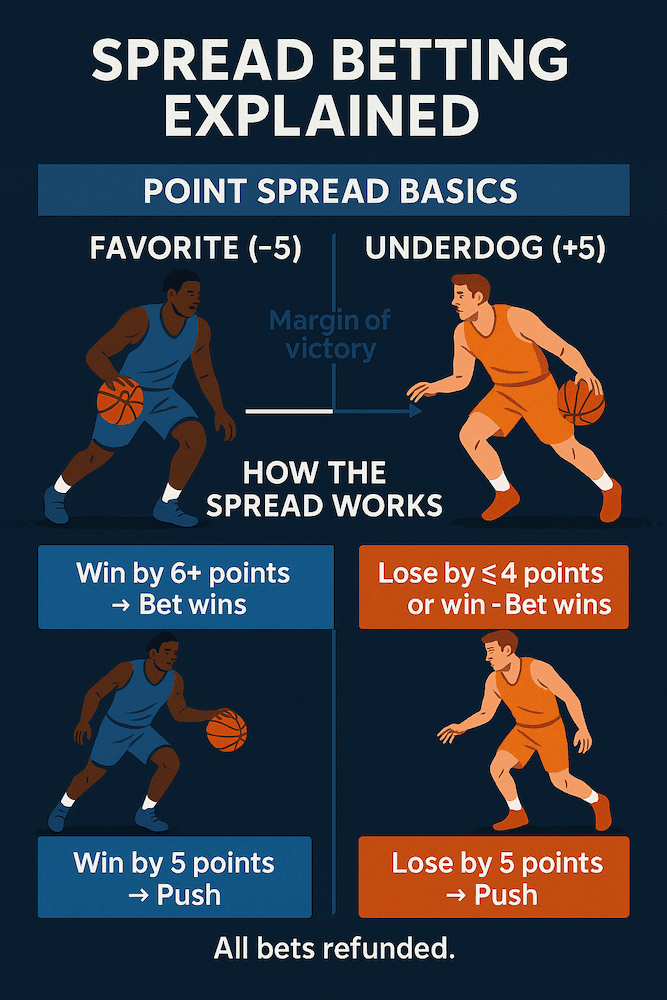

Spread betting is one of the most common and widely used forms of sports wagering, especially in high-scoring sports like football and basketball. It levels the playing field between two teams, giving bettors the opportunity to wager on not just who wins, but by how much. In this guide, you'll learn what a spread bet is, how it works, how to read spread lines, and strategies to make smarter bets.
A spread bet involves betting on the margin of victory in a game. Instead of simply picking the winner, you're wagering on whether a team will win by more (or lose by fewer) points than a specific number set by the oddsmakers—known as the point spread.
Example:
If you bet on Team A, they must win by 7 or more points. If you bet on Team B, they must lose by 6 points or less or win the game.
Understanding how to read point spreads is key in sports betting.
For example, if the Patriots are listed at -3.5, they must win by 4 or more points to cover the spread. On the other hand, if the Jets are at +3.5, they need to either win outright or lose by 3 points or fewer for the bet to hit.
When a team meets these requirements, it’s referred to as “covering the spread.” If the spread is a whole number, such as -7, and the favorite wins by exactly 7 points, the result is called a “push”, which means the game is a tie from a betting perspective, and your original stake is refunded.
Let's say there's an basketball game between Team Blue and Team Orange, and the oddsmakers set the following spread:
Team Blue (-5) vs. Team Orange (+5)
If you bet on Team Blue:
If you bet on Team Orange:
Outcome:
Spread betting allows bettors to take a position on both the favorite and the underdog, and it adds an extra layer of excitement to the game as the margin of victory becomes crucial. However, keep in mind that spread betting can be more challenging to predict accurately, and it's essential to understand the risks involved before placing spread bets.

Spread betting adds depth and strategy to the betting experience by challenging you to predict margins, not just winners. Once you understand how spreads work and how to read the numbers, you’ll unlock a more dynamic way to engage with your favorite sports. With the right research and bankroll discipline, betting the spread can be both strategic and rewarding.
What Is a Spread Bet in Sports Betting?
A spread bet is a wager on the margin of victory, where the favorite must win by a certain number of points, and the underdog must lose by fewer than that margin or win outright.
What Does “Covering the Spread” Mean?
How Are Point Spreads Determined?
What Happens If the Score Lands Exactly on the Spread?
Are Spread Bets Better for Certain Sports?